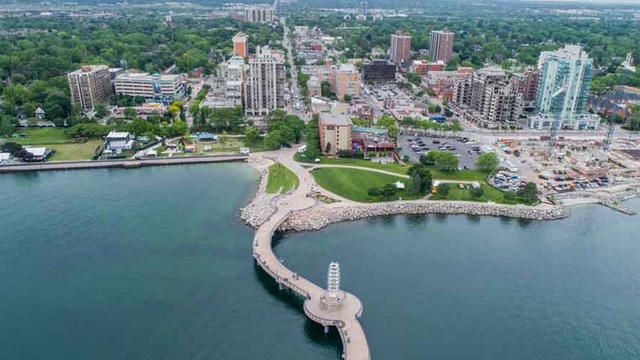Burlington Mayor Addresses Development in the City
Published May 21, 2019 at 3:48 pm

Development in the city of Burlington has been an incredibly hot topic for quite some time now.
Development in the city of Burlington has been an incredibly hot topic for quite some time now. And the conversation surrounding development is showing no signs of slowing down in the near future.
In a recent blog post on the Hamilton-Halton Home Builders’ Association website, it was noted that, “According to the Region of Halton’s approved growth strategy, the City of Burlington is expected to add 8,300 units between 2015-2031 to accommodate for growth.”
“This equates to a minimum of 519 units per year over this period,” continues the blog post. “Since 2015, the City of Burlington has achieved an average of 421.5 units. At this rate, the City of Burlington will fall 1,556 units short.”
However, according to a recent blog post on Burlington Mayor Marianne Meed Ward’s website, these numbers do not accurately represent the full story of the city’s growth.
“There are many units that are approved, but not yet built that would not be captured in the unit counts,” reads the mayor’s blog post. “There is no deadline to start a project once approved, and developers across the region and in Burlington have sat on approvals.”
As highlighted in the blog post, the region’s Best Planning Estimates notes that the city’s share of growth is 185,000 people by 2031. And, according to the 2016 Census, the city is at 183,000.
“With known and approved development underway (including almost 1,000 units being built at the Burlington GO station alone), we are already at our 2031 targets — 12 years early,” reads the blog post.
As a result, and with more developments being proposed, it is expected, according to Meed Ward’s blog post, that the city will be well past its share of growth by 2031.
However, Meed Ward did address some challenges that the city is facing as a result of exceeding its share of growth.
“The challenge for our community is that Best Planning Estimates (BPEs) are tied to infrastructure — everything from roads to community centres to transit investments,” notes the blog post.
As a result, when a community overdevelops and surpasses its BPEs, the community often doesn’t have the infrastructure in place to support the population surge. This, according to the blog post, often leads to a congested city where traffic improvements, transit routes, seniors and community centres, and sports fields are at capacity or overcrowded.
“In addition, when we reach our BPEs well ahead of schedule, we’re not pricing our Development Charges (DCs) accurately,” reads the blog post. “DCs are based on planned population, and we are growing faster than the planned targets.”
And in order to make up for the difference, taxes go up.
So, what is the city doing to address these issues?
In a previous inhalton article, it was noted that city council voted in favour of an interim control bylaw (ICB).
“An ICB puts a temporary prohibition or limitation on the development of certain lands while the municipality is studying or reviewing its land use policies,” reads a previous blog post on Meed Ward’s website. “The initial ‘freeze’ can be imposed for one year, with a maximum extension of one additional year.”
This bylaw will restrict development in the city’s downtown Urban Growth Centre and near the Burlington GO station.
“The Interim Control Bylaw is a pause in development while we get our planning framework right downtown,” reads the blog post. “The projects impacted are not shovel ready. They are in varying stages of approvals, with some having months of planning work ahead of them.”
For more information, click here.
insauga's Editorial Standards and Policies advertising





